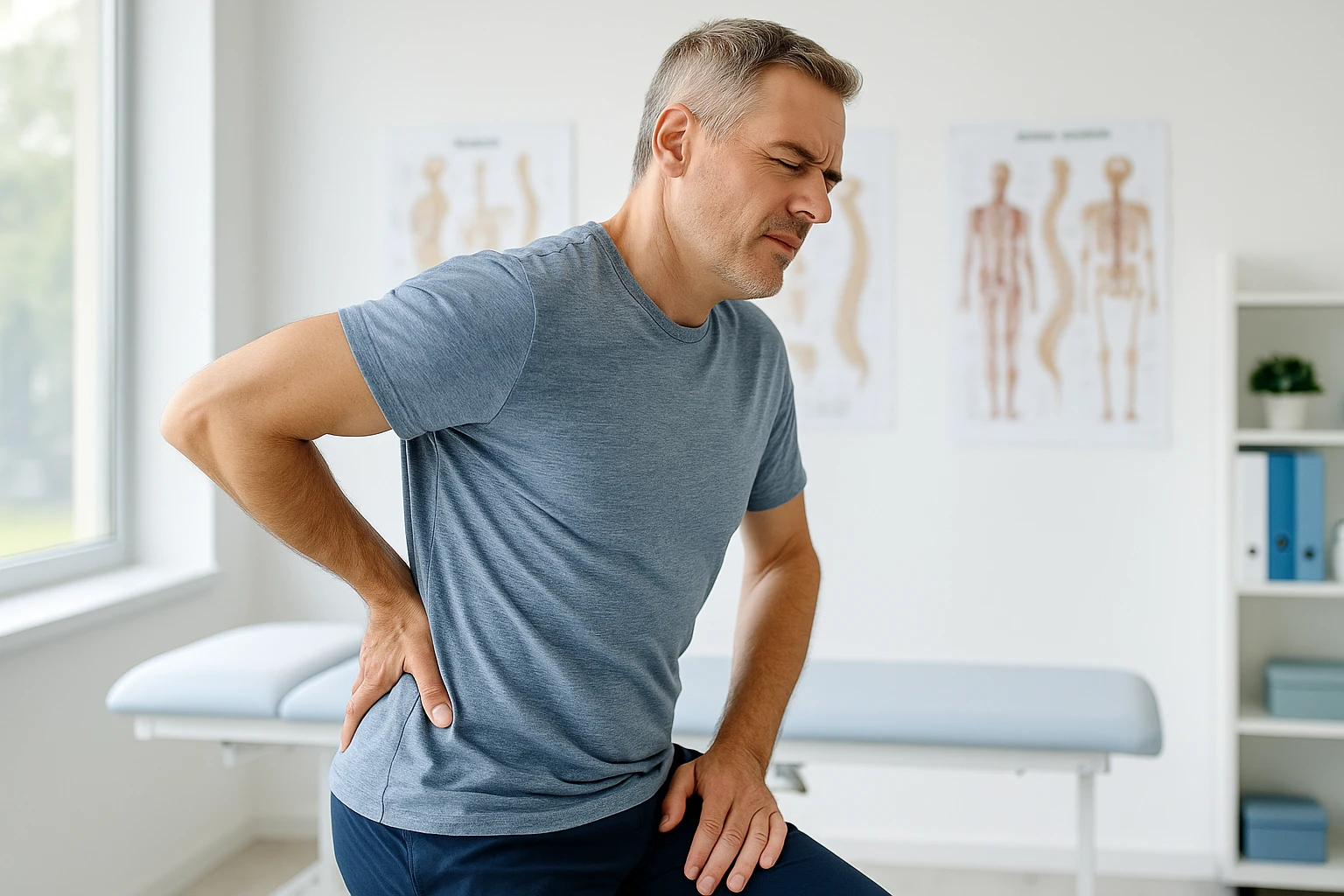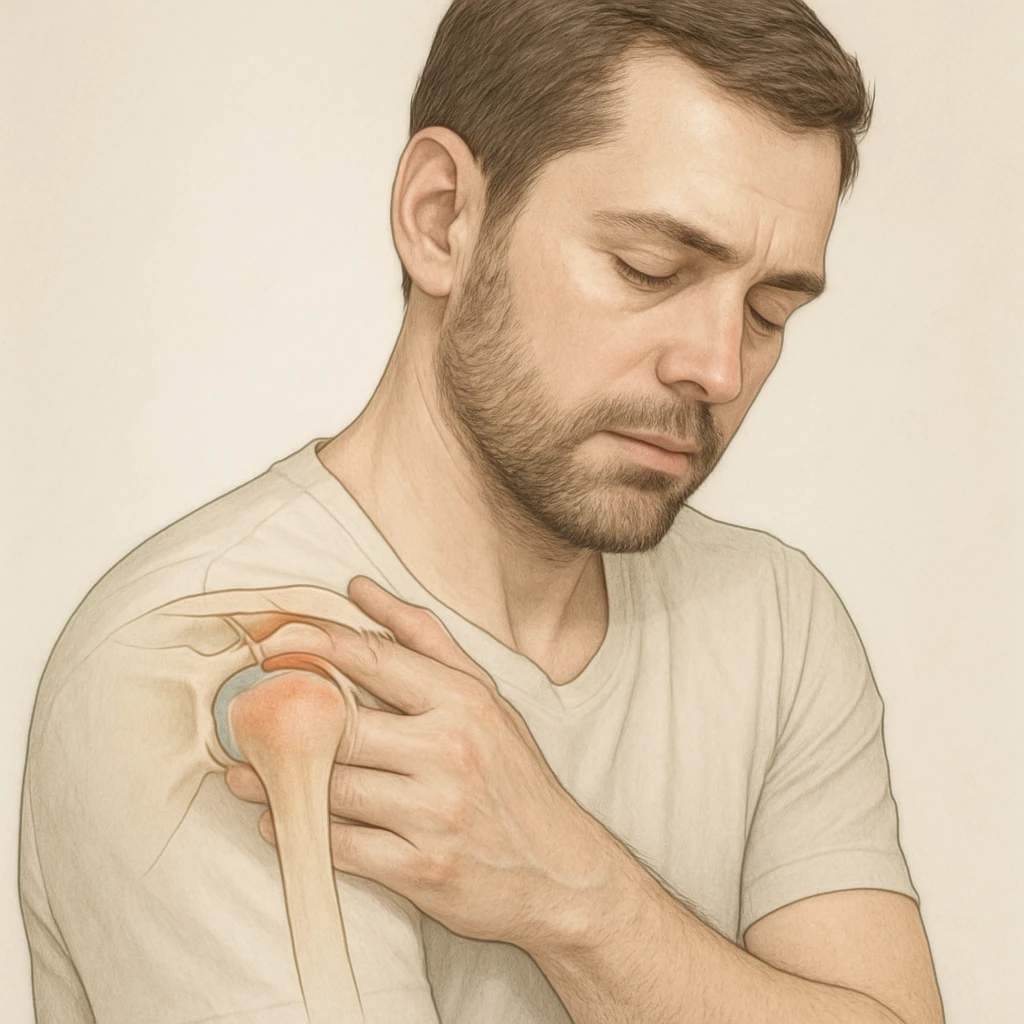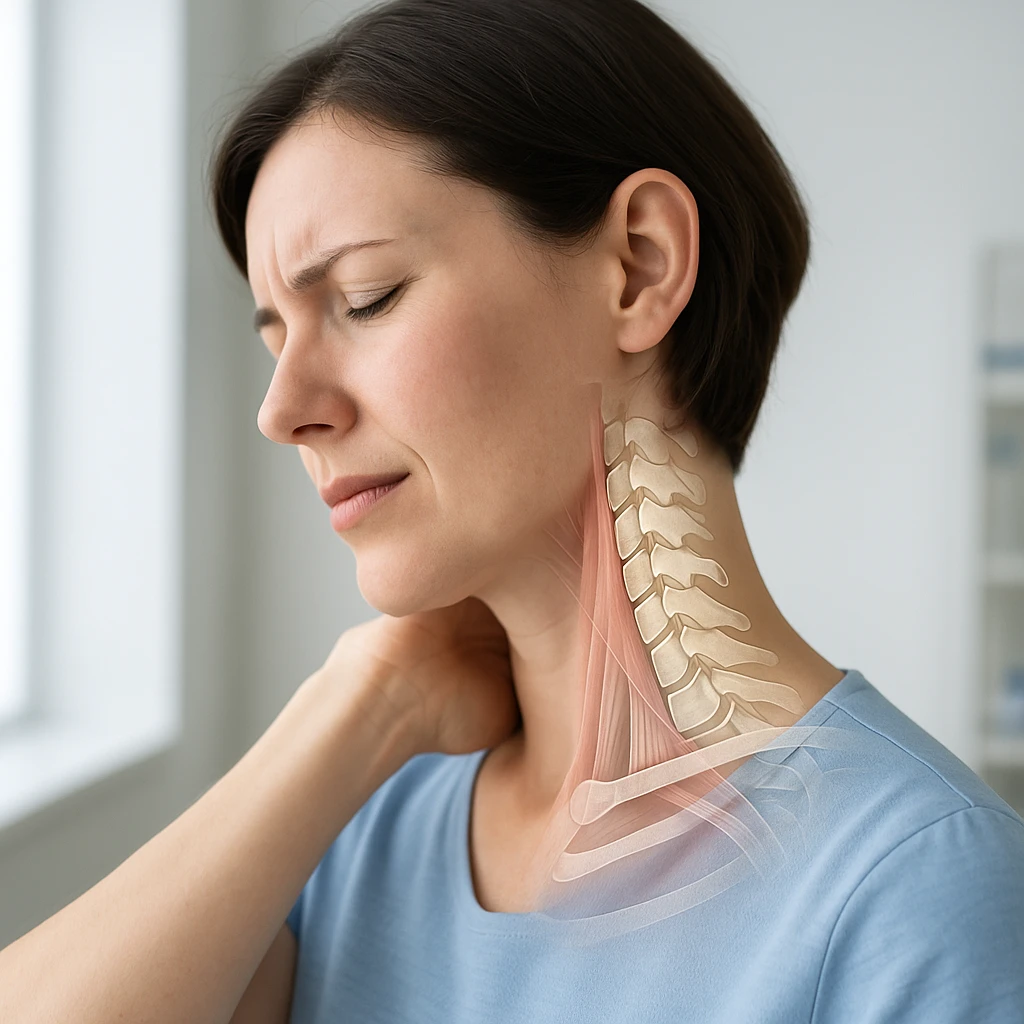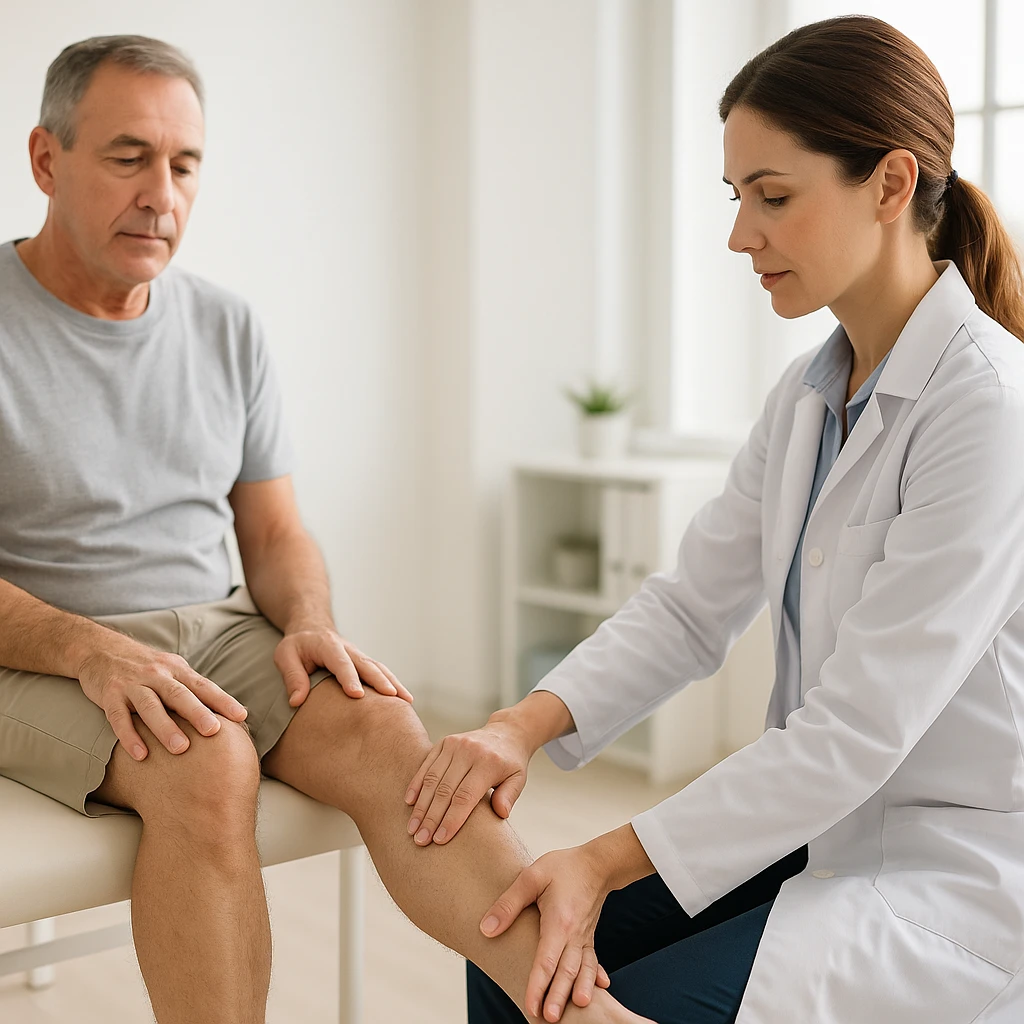Diagnosing and Managing Chronic Back Stiffness
Back stiffness is a common musculoskeletal condition that often occurs alongside low back pain, restricting movement and daily activities. It can stem from mechanical issues such as muscle or ligament strain, degenerative disc disease, or spinal arthritis, and may also involve inflammatory disorders like ankylosing spondylitis. Research indicates that stiffness is not solely mechanical-it can also involve altered sensory perception and muscle guarding as a protective response. Recognizing the underlying mechanisms, risk factors, and treatment options helps clinicians distinguish between structural and perceptual stiffness and develop effective management strategies. This article reviews the biological, mechanical, and perceptual aspects of back stiffness, including its causes, diagnosis, therapy, and prevention.
What Is Back Stiffness?
Back stiffness refers to a sensation of tightness, limited movement, or rigidity in the spinal muscles and tissues. Clinically, it is commonly associated with low back pain and decreased flexibility, though the mechanisms can differ widely. In some individuals, stiffness represents a true mechanical restriction within the muscles, ligaments, or joints, while in others it is a perceptual experience not always linked to measurable physical changes.
Studies show that the sensation of stiffness does not always align with objective findings from muscle or joint assessments. Many people report stiffness even when tissue compliance appears normal. This suggests that stiffness may arise from sensory interpretation as much as from physical limitation, functioning as a protective signal to reduce movement when discomfort or strain is perceived.
Key Mechanisms of Back Stiffness
- Mechanical Component: Increased resting stiffness in the paraspinal muscles, including the multifidus and erector spinae, is commonly observed in people with low back pain.
- Perceptual Component: Sensory interpretation and muscle guarding can create a feeling of tightness even without objective rigidity.
- Protective Function: Stiffness may serve as a defense response, limiting movement to prevent additional strain or injury.
Objective evaluation of muscle stiffness can be performed using elastography or myotonometry to measure tissue elasticity and resistance. While these tools are primarily research-based, they highlight the dual nature of back stiffness-both measurable and perceptual-which is essential for accurate assessment and treatment planning.
Causes and Contributing Factors
Back stiffness can develop from structural, mechanical, or inflammatory processes affecting the spine and surrounding tissues. It often results when muscles, ligaments, or intervertebral discs undergo strain or degenerative change that limits normal motion. Identifying the underlying cause helps distinguish between short-term stiffness and chronic or progressive conditions requiring targeted intervention.
Main Categories of Causes
- Mechanical and Structural Factors: Muscle or ligament strain, degenerative disc disease, spinal arthritis, and spinal stenosis can cause localized tightness, reduced flexibility, and persistent rigidity.
- Inflammatory Conditions: Conditions such as ankylosing spondylitis and other inflammatory arthritides lead to inflammation of spinal joints and ligaments, typically producing morning stiffness that improves with activity.
- Lifestyle and Occupational Factors: Repetitive lifting, poor posture, and prolonged sitting impose continuous strain on spinal tissues, promoting fatigue and chronic tension even after initial recovery.
Chronic back stiffness often results from an interaction between these factors. Degenerative or inflammatory spinal diseases may underlie the condition, while lifestyle and occupational strain can intensify symptoms. Addressing both structural and behavioral aspects supports prevention through posture awareness, ergonomic adjustment, and timely intervention.
Symptoms and Pathophysiology
Back stiffness manifests through both physical limitation and sensory perception of rigidity or tension. People commonly report reduced spinal flexibility, difficulty bending or twisting, and discomfort after periods of inactivity such as sitting or lying down. The stiffness often eases with movement, particularly in mechanical cases, though in inflammatory conditions it is more prominent after rest.
Common Clinical Features
- Reduced ability to bend or twist the spine.
- Dull or aching discomfort following inactivity.
- Morning stiffness typical of inflammatory disorders.
- Improvement with gentle motion or stretching.
Morning stiffness is especially important diagnostically. It suggests an inflammatory cause when symptoms are worse after rest and improve with movement-whereas stiffness from mechanical strain tends to worsen with activity or load.
Underlying Mechanisms
Back stiffness involves muscular and neural processes. Increased resting stiffness of the paraspinal muscles-particularly the multifidus and erector spinae-is common in people with low back pain. These muscles stabilize the spine, and heightened tone can emerge as part of the body’s protective response to pain or tissue strain.
Beyond physical restriction, stiffness also includes a perceptual element. Altered sensory processing may cause the brain to interpret signals of discomfort or vulnerability as a cue to limit motion. This protective perceptual mechanism can help prevent injury initially but may become maladaptive if it leads to persistent guarding and reduced mobility. Understanding both the structural and perceptual dimensions is crucial for effective rehabilitation and long-term recovery.
Risk Factors and Clinical Evaluation
Back stiffness often develops from a combination of personal, occupational, and medical factors that influence spinal mobility over time. Certain demographic and lifestyle characteristics can increase the likelihood of chronic stiffness, while underlying spinal conditions may determine its persistence and severity.
Key Risk Factors
- Age over 30: Natural degenerative changes in spinal discs and joints reduce flexibility and tissue elasticity.
- Obesity: Excess body weight places additional mechanical load on the spine.
- Sedentary lifestyle: Prolonged sitting or inactivity weakens muscles and limits joint mobility.
- Repetitive physical strain: Jobs or activities that involve frequent lifting, bending, or twisting increase stress on spinal structures.
In addition to lifestyle and mechanical influences, degenerative and inflammatory spine diseases are major contributors to persistent stiffness. Conditions such as osteoarthritis, degenerative disc disease, and inflammatory disorders can cause long-term structural changes that limit motion and produce chronic symptoms.
Clinical Assessment and Diagnosis
- Medical history and physical examination: Assessment includes posture evaluation, range of motion testing, muscle tone, and pain distribution.
- Mechanical vs. perceptual stiffness: Clinicians differentiate between stiffness due to physical restriction and the perceived sensation of tightness linked to altered sensory processing or muscle guarding.
- Imaging studies: X-rays and MRI scans can reveal structural abnormalities, though subjective stiffness does not always correlate with imaging findings.
A thorough evaluation integrates physical findings, imaging results, and patient-reported symptoms to identify the source of stiffness and guide personalized treatment planning.
Treatment, Rehabilitation, and Prevention
Effective management of back stiffness focuses on addressing underlying causes, restoring movement, and preventing recurrence. Treatment may combine physical therapy, posture correction, and anti-inflammatory strategies to improve mobility and reduce discomfort. The therapeutic plan depends on whether stiffness arises from mechanical strain, inflammation, or chronic neuromuscular adaptation.
Core Treatment Strategies
- Physical therapy: Stretching and strengthening exercises improve flexibility, decrease muscle tension, and enhance spinal stability. Posture correction and movement retraining help maintain balanced spinal alignment and reduce strain on joints and muscles.
- Graded exercise and cognitive approaches: These address both mechanical and perceptual aspects of stiffness, reducing protective muscle guarding and promoting confident, pain-free movement.
- Anti-inflammatory management: When inflammation contributes to stiffness, clinicians may recommend supervised pharmacologic or adjunctive therapies to relieve irritation and support healing.
Long-Term Prevention and Maintenance
- Mobility and core-strengthening routines: Regular stretching, walking, and stability exercises support flexibility and spinal health.
- Ergonomic and postural habits: Proper workstation setup, safe lifting techniques, and regular movement breaks help minimize spinal strain.
- Early intervention: Addressing mild stiffness promptly helps prevent chronic pain and promotes long-term spinal resilience.
Combining rehabilitation with preventive practices helps maintain spinal mobility and significantly reduces the likelihood of recurring back stiffness.
Frequently Asked Questions About Back Stiffness
What are the most common causes of back stiffness?
Back stiffness can develop from muscle or ligament strain, degenerative disc disease, arthritis, or poor posture. Inflammatory conditions such as ankylosing spondylitis can also contribute, especially when stiffness is worse in the morning.
When should I see a doctor for back stiffness?
Medical evaluation is recommended if stiffness lasts more than a few weeks, limits daily activities, or is accompanied by pain, numbness, or reduced mobility. Early diagnosis helps identify whether the stiffness is mechanical or inflammatory in nature.
Can exercise help reduce back stiffness?
Yes, gentle stretching, core-strengthening, and low-impact aerobic activity can improve flexibility and reduce stiffness. Regular movement prevents muscles from tightening and supports long-term spinal health.
Why is my back stiffest in the morning?
Morning stiffness often occurs due to inflammatory conditions or prolonged inactivity overnight. Light stretching or warm showers can help ease muscle tension and improve movement.
How is back stiffness diagnosed by clinicians?
Doctors typically assess medical history, posture, and range of motion, and may use imaging such as X-rays or MRI to rule out structural issues. They also consider whether the stiffness feels mechanical or perceptual, which guides treatment.
What are the best ways to prevent back stiffness?
Maintaining good posture, staying active, and avoiding long periods of sitting are key. Regular exercise, ergonomic work setups, and proper lifting techniques all help reduce the risk of stiffness returning.
Can stress or anxiety make back stiffness worse?
Yes. Stress can cause muscle tension and guarding, which increases the perception of stiffness. Relaxation techniques and consistent movement can help relieve this type of muscular tightness.













